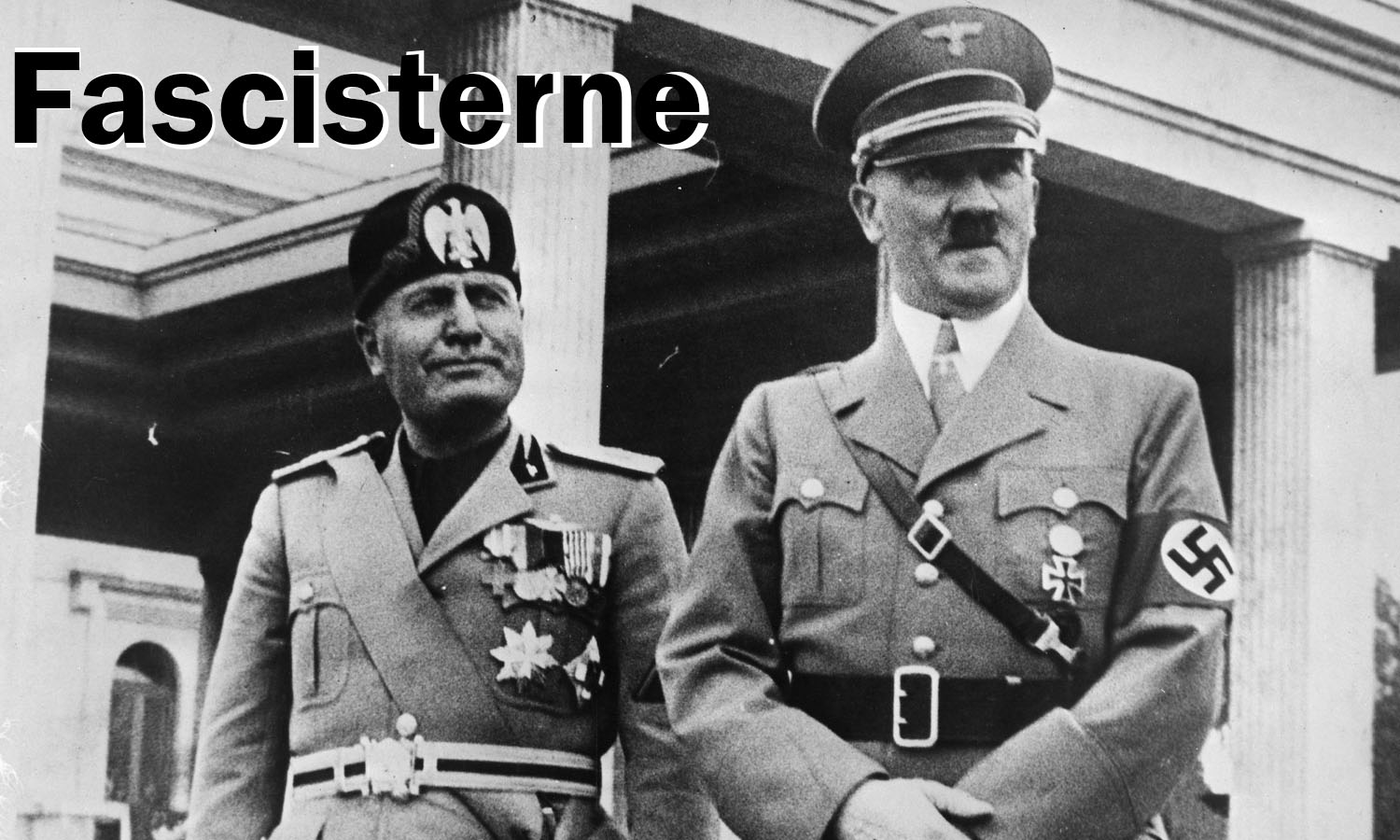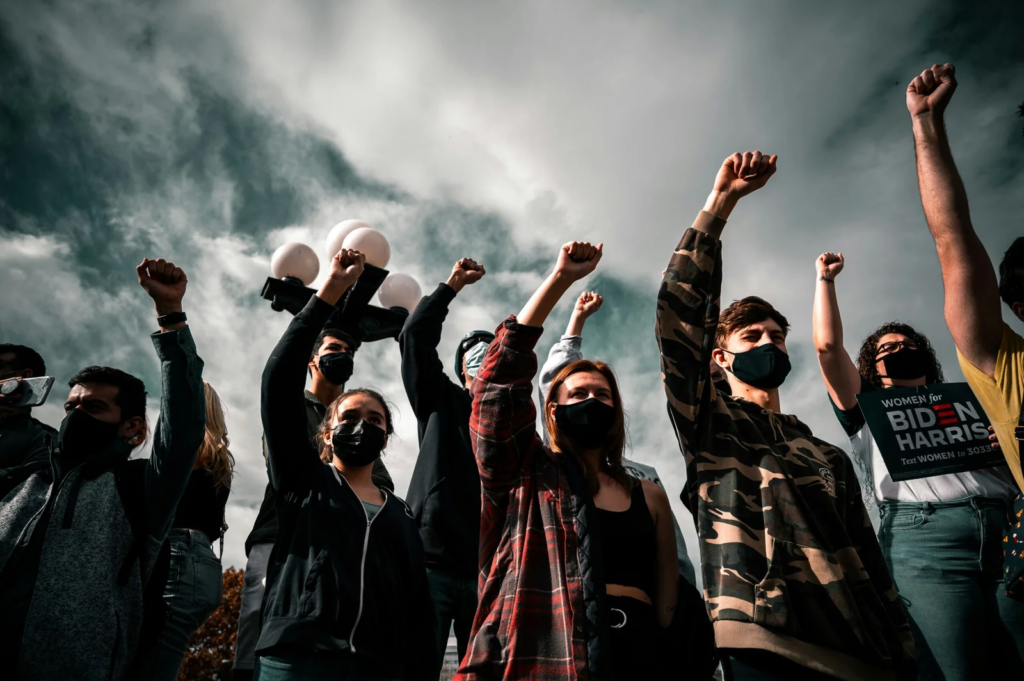News
Understanding “Fascisterne”: A Simple Guide

- Share
- Tweet /home/u433845138/domains/newsmm.co.uk/public_html/wp-content/plugins/mvp-social-buttons/mvp-social-buttons.php on line 71
https://newsmm.co.uk/wp-content/uploads/2025/07/bb-b-4-1000x600.jpg&description=Understanding “Fascisterne”: A Simple Guide', 'pinterestShare', 'width=750,height=350'); return false;" title="Pin This Post">
The term “Fascisterne” might sound complex, but it simply refers to followers of fascism, a political idea that gained a lot of power in the early 20th century. It’s a topic that’s important to understand because its influence shaped much of modern history and continues to have echoes in our world today. This article will help you grasp what “Fascisterne” means, where it came from, who was involved, and its lasting impact, all in an easy-to-understand way.
What is “Fascisterne” and Where Did It Come From?
When we talk about “Fascisterne,” we’re talking about people who supported or were part of a political movement called fascism. This idea first appeared in the early 1900s, especially in Italy, after the end of World War I. This was a time of great change and difficulty for many countries. The war had left behind a feeling of disappointment and a lot of instability. Economies were struggling, and there was a lot of social unrest. People were looking for solutions, and this created a fertile ground for new, sometimes extreme, ideas to grow.
Benito Mussolini was a very important person in the development of fascism in Italy. He mixed strong feelings of national pride (nationalism) with ideas that were against socialism (anti-socialist sentiments). He presented fascism as a way to fix the problems and chaos in society. His ideas became popular because many people were unhappy with their governments at the time.
As fascism became stronger in Italy, similar ideas started to spread across Europe. Other influential leaders, like Adolf Hitler in Germany, adopted similar principles. They adjusted these ideas to fit their own countries’ situations. The movement appealed to people who wanted strong leadership and a sense of direction when things felt uncertain. Fascist parties were very good at using people’s fears and resentments to gain support. They used propaganda, which is a way of spreading ideas to influence opinions, to get popular backing.
The Core Ideas and Characteristics of Fascism

Fascism is built on a few main ideas that shape how it views the world:
- The State is Supreme: A central belief in fascism is that the state, meaning the country and its government, is more important than individual people’s rights. The idea is that everyone should put the group’s identity and loyalty to the state first.
- Strong, Authoritarian Leadership: Fascist systems rely on a very strong leader who has almost all the power. This leader becomes a symbol of the nation’s strength and guides the country. In such systems, people are generally not allowed to disagree or speak out against the leader.
- Intense Nationalism: This is a key part of fascism. It means having a very deep sense of pride and loyalty to one’s nation, often at the expense of other nations. National identity becomes extremely important, which can lead to treating outsiders or minorities badly.
- Total Control (Totalitarianism): Fascist governments try to control every part of life, not just politics. This includes things like education, media, and even people’s personal lives. The goal is to create a country where everyone thinks and acts according to the government’s ideas, and individual differences are not encouraged.
- Emphasis on Strength and Action: Fascism often promotes ideas of national strength, military power, and the importance of action, even if it means using force. This can lead to aggressive policies and a belief that stronger nations have a right to dominate weaker ones, sometimes linked to a flawed idea called Social Darwinism.
- Use of Propaganda: Fascist regimes heavily rely on propaganda to shape what people think and feel. This involves carefully creating messages, using powerful images, and controlling information to get people to support their ideas. Children are often taught these ideas from a young age to make sure they become part of the country’s culture.
These characteristics show how fascist systems tried to create a highly unified and controlled society, often through fear and the suppression of different opinions.

Key Figures Associated with “Fascisterne”
While Benito Mussolini and Adolf Hitler are the most prominent figures, many others played roles in fascist or similar movements, either by leading them or fighting against them.
- Benito Mussolini (Italy): As the founder of Italian Fascism, Mussolini became prime minister in 1922 and gradually built a totalitarian state. He introduced policies that emphasized national unity, military strength, and economic self-sufficiency, often using propaganda and suppressing opposition.
- Adolf Hitler (Germany): Leader of the Nazi Party, Hitler adapted many fascist principles to create Nazism in Germany. His regime was characterized by extreme nationalism, racial ideology (especially antisemitism), militarism, and expansionist goals that led to World War II and the Holocaust.
Beyond these well-known figures, there were also many individuals who actively resisted fascist ideologies. For example, during the Spanish Civil War, many young people from different countries, including Danes like Harald, Kai, and Aage Nielsen and Hans Petersen, went to Spain to fight against fascism. They believed it was important to stand up against these ideas, even at great personal risk. This shows that while fascism gained power, there were also strong movements of resistance.
How Did “Fascisterne” Rise to Power?
The rise of “Fascisterne” to power in different countries wasn’t always the same, but there were common patterns:
- Exploiting Instability: As mentioned, the aftermath of World War I left many countries in a state of chaos. Economic problems, unemployment, and social unrest made people desperate for solutions. Fascist leaders stepped in, promising to restore order and make their nations strong again.
- Creating an “Us vs. Them” Mentality: Fascist leaders often pointed fingers at specific groups (like minorities or political opponents) and blamed them for the country’s problems. This created a sense of “us versus them” and helped to unite a group of followers against a common enemy.
- Effective Propaganda: Fascist movements were masters of propaganda. They used newspapers, radio, and public speeches to spread their messages, often filled with emotional appeals, false information, and exaggerated promises. They controlled the narrative and silenced opposing voices.
- Paramilitary Violence: In many cases, fascist groups had armed wings or militias (like Mussolini’s Blackshirts or Hitler’s Stormtroopers). These groups used violence and intimidation against political opponents, trade unions, and minority groups, creating fear and weakening resistance.
- Weak Democratic Institutions: In countries where democratic governments were weak or ineffective, fascism found it easier to take hold. People lost faith in traditional politics, opening the door for radical alternatives.
- Appealing to Different Groups: While often supported by the middle class, fascist movements tried to appeal to a broad range of people, including workers who were unhappy with their conditions and even parts of the elite who feared socialist revolutions. They promised to protect national interests and restore traditional values.
In Italy, Mussolini’s Fascist Party used intimidation and political maneuvering to gain influence, eventually leading to his appointment as Prime Minister. In Germany, Hitler’s Nazi Party grew its support through powerful rallies, propaganda, and by exploiting economic despair and national humiliation after World War I.
The Impacts and Consequences of Fascism
The impact of “Fascisterne” on society and politics was profound and often devastating:
- Loss of Freedoms: Under fascist rule, individual freedoms like freedom of speech, assembly, and the press were severely limited or completely abolished. Citizens were expected to conform to the state’s ideology.
- Human Rights Violations: Fascist regimes were responsible for widespread human rights abuses, including imprisonment, torture, and murder of political opponents, minorities, and anyone deemed “undesirable.” The Holocaust, perpetrated by Nazi Germany, is a horrific example of this.
- Aggressive Foreign Policies and War: Nationalism and militarism often led to aggressive expansionist policies. Fascist countries, particularly Germany and Italy, embarked on territorial conquests, which directly contributed to the outbreak of World War II, a conflict that caused unimaginable destruction and loss of life globally.
- Economic Control and State Intervention: Fascist governments often exerted significant control over the economy, aiming for self-sufficiency and directing industries to serve state goals, especially military production.
- Cultural and Social Transformation: Art, literature, and education were heavily controlled and used to promote the state’s ideology. Gender roles became rigid, emphasizing traditional family structures and military service. Trust in institutions like media and government eroded as propaganda became the norm.
- Division and Distrust: Within societies, fascist tactics created deep divisions and distrust. The “us versus them” mentality fractured communities, leading to conflict and hatred.
The period of fascist dominance in Europe left deep scars and fundamentally reshaped the global political landscape.
Common Misconceptions about “Fascisterne”
There are a few common misunderstandings about fascism that are good to clarify:
- Fascism is just another form of extreme right-wing politics: While fascism is on the far right of the political spectrum, it has unique characteristics that set it apart. It’s not just about conservative ideas; it involves a specific combination of totalitarian control, intense nationalism, and the use of violence to achieve its goals.
- Fascism only happens in economically depressed times: While economic hardship certainly provided fertile ground for fascism to rise, it’s not the only factor. Social unrest, political instability, and a desire for strong leadership can also contribute, even in more prosperous times.
- Fascism is only about one leader: While a charismatic leader is often central to fascist movements, the ideology is supported by a broader structure of party members, paramilitary groups, and propaganda machines. It’s a system, not just one person.
- Fascism and Communism are the same: This is a significant misconception. While both are totalitarian, they have fundamentally different ideologies. Communism is based on class struggle and aims for a classless society with collective ownership, while fascism emphasizes national unity, traditional social hierarchies, and private ownership within a state-controlled economy. They were, in fact, often bitter enemies.
The Legacy of “Fascisterne” Today
Even though the major fascist regimes of the 20th century are gone, the legacy of “Fascisterne” continues to be felt and discussed today.
- Historical Warning: The horrors of World War II and the atrocities committed by fascist regimes serve as a powerful historical warning about the dangers of unchecked power, extreme nationalism, and the suppression of human rights.
- Resurgence of Extreme Ideas: In various parts of the world, we sometimes see political movements that show similar tendencies to historical fascism. These might include strong nationalistic sentiments, anti-immigrant rhetoric, the demonization of minority groups, and an appeal to authoritarian leadership.
- Importance of Democratic Values: The experience with fascism has reinforced the importance of strong democratic institutions, protection of individual liberties, freedom of the press, and an active, informed citizenry to resist such movements.
- Contested History: In some regions, the legacy of fascism remains a contested topic, with ongoing debates about how to remember and learn from this difficult period of history.
Understanding “Fascisterne” isn’t just about looking back at the past; it’s about recognizing the patterns and dangers of certain political approaches so we can work towards a more peaceful and just future.
Frequently Asked Questions (FAQs)
1. What does “Fascisterne” literally mean? “Fascisterne” is a Danish term that means “the fascists.” It refers to the people who follow the ideology of fascism.
2. Is fascism the same as Nazism? While Nazism (National Socialism) shared many characteristics with fascism, such as totalitarian control, nationalism, and authoritarianism, it was distinct due to its extreme racial ideology, particularly antisemitism, which was central to its beliefs and policies. Nazism can be seen as a specific, more extreme form of fascism.
3. Why did people support fascism? People supported fascism for various reasons. Many were desperate for stability and order during times of economic hardship and social unrest. Fascist leaders promised strong leadership, national pride, and a return to traditional values. Propaganda and the creation of “enemies” also played a significant role in uniting support.
4. How did fascism deal with the economy? Fascist regimes typically asserted strong state control over the economy, prioritizing national interests and often military production. While they didn’t abolish private property entirely (unlike communism), they heavily regulated industries and directed economic activity to serve the state’s goals.
5. What role did propaganda play in fascism? Propaganda was absolutely crucial for fascist movements. It was used to shape public opinion, promote the leader and the state’s ideology, demonize opponents, and create a sense of national unity and purpose. They used all available media, from newspapers and radio to rallies and art.
6. Did fascism involve violence? Yes, violence was a common tool for fascist movements and regimes. They used paramilitary groups to intimidate political opponents, suppress dissent, and enforce their will. This often escalated into widespread human rights abuses and state-sponsored terror.
7. Is fascism left-wing or right-wing? Fascism is generally considered a far-right political ideology. While it might have some elements that seem to cross traditional political lines (like state intervention in the economy), its core tenets of extreme nationalism, authoritarianism, hierarchy, and opposition to both liberal democracy and communism firmly place it on the right.
8. Are there still fascist movements today? While classical fascist regimes no longer exist, elements of fascist ideology and tactics can be observed in various extreme nationalist, authoritarian, or neo-fascist groups around the world. These groups often promote similar themes of national purity, anti-immigrant sentiment, and strong leadership.
9. How did fascism contribute to World War II? Fascist regimes, particularly Nazi Germany under Hitler and Fascist Italy under Mussolini, pursued aggressive expansionist foreign policies driven by intense nationalism and militarism. Their invasions and alliances directly led to the outbreak and escalation of World War II.
10. What can we learn from understanding fascism? Learning about fascism helps us recognize the dangers of political extremism, the importance of protecting democratic values and human rights, the need for critical thinking about propaganda, and the devastating consequences that can arise when societies succumb to divisive ideologies and authoritarian rule.
Click for more amazing info. News MM

-

 Celebrity8 months ago
Celebrity8 months agoIndia Rose Brittenham: All You Need to Know About Heather Thomas’ Daughter
-

 Celebrity8 months ago
Celebrity8 months agoMargot Rooker: All You Need to Know About Michael Rooker’s Wife
-

 Celebrity8 months ago
Celebrity8 months agoNadia Farmiga? All You Need to Know About Taissa Farmiga’s Sister
-

 Celebrity8 months ago
Celebrity8 months agoRobert Noah? All You Need to Know About Trevor Noah’s Father
-

 Celebrity8 months ago
Celebrity8 months agoJackie Witte? All You Need to Know About Paul Newman’s First Wife
-

 Celebrity8 months ago
Celebrity8 months agoCheryl Pistono? All You Need to Know About Kareem Abdul-Jabbar’s Ex-Girlfriend
-

 Celebrity8 months ago
Celebrity8 months agoAbigail S. Koppel? All You Need to Know About Leslie Wexner’s Wife
-

 Celebrity7 months ago
Celebrity7 months agoWho is the Father of Jay-Z? Biography of Adnis Reeves












